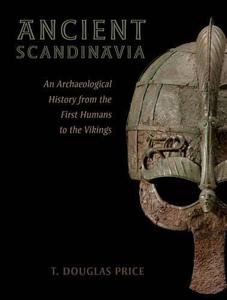April 25, 2024
Ancient Scandinavia an archaeological history from the first humans to the Vikings

Free Download Ancient Scandinavia : an archaeological history from the first humans to the Vikings By Price, Theron Douglas
2015 | 494 Pages | ISBN: 0190231971 | PDF | 19 MB
"Although occupied only relatively briefly in the long span of world prehistory, Scandinavia is an extraordinary laboratory for investigating past human societies. The area was essentially unoccupied until the end of the last Ice Age when the melting of huge ice sheets left behind a fresh, barren land surface, which was eventually covered by flora and fauna. The first humans did not arrive until sometime after 13,500 BCE. The prehistoric remains of human activity in Scandinavia–much of it remarkably preserved in its bogs, lakes, and fjords–have given archaeologists a richly detailed portrait of the evolution of human society. In this book, Doug Price provides an archaeological history of Scandinavia–a land mass comprising the modern countries of Denmark, Sweden, and Norway-from the arrival of the first humans after the last Ice Age to the end of the Viking period, ca. AD 1050. Constructed similarly to the author’s previous book, Europe before Rome, Ancient Scandinavia provides overviews of each prehistoric epoch followed by detailed, illustrative examples from the archaeological record. An engrossing and comprehensive picture emerges of change across the millennia, as human society evolves from small bands of hunter–gatherers to large farming communities to the complex warrior cultures of the Bronze and Iron Ages, which culminated in the spectacular rise of the Vikings. The material evidence of these past societies–arrowheads from reindeer hunts, megalithic tombs, rock art, beautifully wrought weaponry, Viking warships–give vivid testimony to the ancient humans who once called home this often unforgiving edge of the inhabitable world"–"This book is about the prehistory of Scandinavia, from the first inhabitants to their Viking descendants. Scandinavia in this study includes the modern countries of Denmark, Sweden, and Norway. The first chapter provides frameworks for understanding the prehistory of Scandinavia, concentrating on place, time, and archaeology. The subsequent chapters are organized by the major archeological divisions of the time between the arrival of the first inhabitants, sometime after 13,500 BC, and the end of the Viking period, ca. AD 1050, from the end of the Pleistocene, to the early Neolithic, to the Vikings. The archaeology of this region provides an exceptional perspective on the development of human society. It’s a kind of laboratory for the evolution of human culture that allows us to examine detailed evidence about past changes in human society and to ask questions about what took place during this process. Human groups in Scandinavia evolved from small bands of migratory hunters to village farmers, metal-using tribes, and early states in roughly 10,000 years. While the focus of this volume is on Scandinavia, what has been learned there has implications across a much broader set of archaeological questions: how do humans colonize new regions, how do hunter-gatherers adapt to difficult environments, how do humans cope with dramatic changes in their environment, how important was the sea for hunter-gatherers, why did foragers become farmers, what were the consequences of farming, how did hierarchical social relationships develop, how did early states operate? Insight on these questions in Scandinavia sheds light elsewhere in the prehistoric world"–
Buy Premium From My Links To Get Resumable Support,Max Speed & Support Me
Links are Interchangeable – Single Extraction
